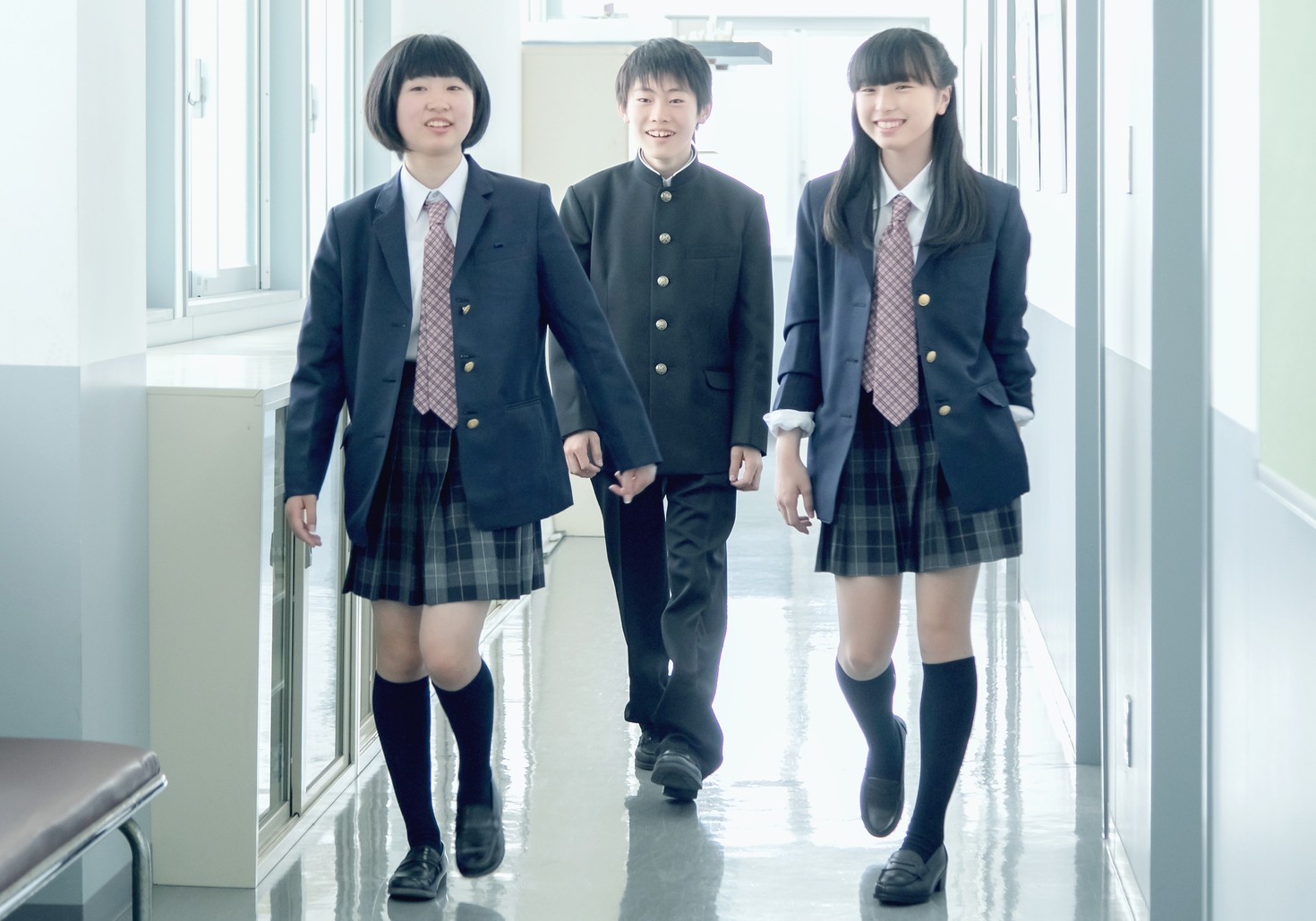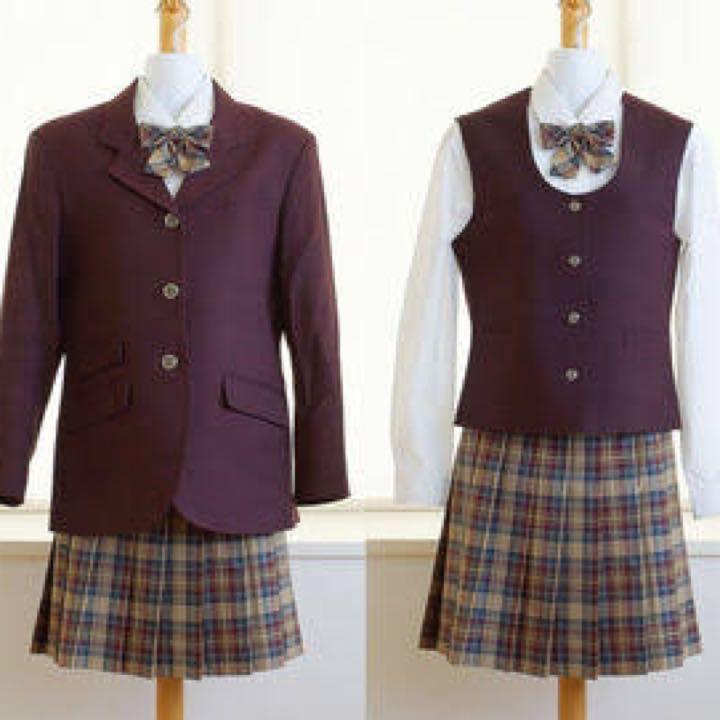The Definitive Guide to Japanese Uniforms
Facts About Japanese Uniforms Uncovered
Table of ContentsExcitement About Japanese UniformsGetting The Japanese Uniforms To WorkA Biased View of Japanese UniformsExamine This Report on Japanese UniformsOur Japanese Uniforms PDFs
In Setagaya, brand-new female jr high school pupils can wear trousers as quickly as their schools make the ideal preparations. In April 2015, the education and learning ministry asked schools throughout Japan to show factor to consider for their trainees, consisting of by enabling them to put on the attires of their self-identified sexes. Nonetheless, a lot like western media, there are tales in anime that are based on real-life events as well. One point that typically does not show up in anime are the rigorous rules regarding transport (Japanese uniforms). Pupils are frequently outlawed from driving to college. Rather, they have to stroll, bike, or take public transport. While taking mass transit, they are usually called for to stand, in order to leave seats open up for senior or handicapped people - no word on what is anticipated from impaired pupils.
One point that typically does not show up in anime are the rigorous rules regarding transport (Japanese uniforms). Pupils are frequently outlawed from driving to college. Rather, they have to stroll, bike, or take public transport. While taking mass transit, they are usually called for to stand, in order to leave seats open up for senior or handicapped people - no word on what is anticipated from impaired pupils.This remains in the name of public security. This kind of thing frequently doesn't turn up in anime, because character's relationships with their classmates are usually considered more vital than parental ones, as well as there's nothing unusual regarding walking to college or taking mass transit. Still, some of these restrictions may come as a shock.
Also today, a lot of Japanese intermediate school attires have a high collar and are in the sailor style. Nonetheless, there are additionally schools that change to sports jackets, as several go abroad for institution journeys and also the high collar looks also much like a fatigue clothes. Originally an uniform for the navy, clothing motivated by seafarer clothing are presently known as institution attires for ladies in Japan.
Unknown Facts About Japanese Uniforms
 Sailor Matches. It remained in England in the first quarter of the century when somebody had the inspiration that children must wear seafarers' trousers. English seafarers had been clothing in pantaloons since the seventeenth century and English kids taken on trousers a half century before their papas did. The collar, also referred to as a tar flap, was a holdover from an earlier period when males had lengthy hair that was linked back with tar or oil.
Sailor Matches. It remained in England in the first quarter of the century when somebody had the inspiration that children must wear seafarers' trousers. English seafarers had been clothing in pantaloons since the seventeenth century and English kids taken on trousers a half century before their papas did. The collar, also referred to as a tar flap, was a holdover from an earlier period when males had lengthy hair that was linked back with tar or oil.
Part of what's so intriguing concerning your question is that this style of gym wear is no more made use of in Japanese schools. In Japanese society, a method for identifying the leader of a team, be it the leader of an Ouendan or a club or team head of state, is to look for the red armband on the arm - Japanese uniforms.
In Japan, there is a solid emphasis on consistency and also rules. This can be seen in exactly how institutions are run, where uniformity is vital, as well as there is a great deal of concentrate on discipline. In a society that values these points, it makes good sense that the colleges would certainly mirror them. When it concerns fashion, Japanese women agree to stand there shivering in the freezing cold.
The natural go to this website hair shade for Japanese people is typically black, of training course. Of program high school ladies care concerning their footwear.
Some Known Facts About Japanese Uniforms.
One more new pattern is for the women to use tennis shoes with their uniforms. The Japanese have established a common feeling for the periods living in a nation with unique modifications in periods.
 It was put on over a tee shirt and a leading called a jumper, and covered the seafarer's shoulders. The collar was a conventional component however was not everyday wear for seafarers at sea. Choose a blue, white, red, and khaki taste buds. The timeless seafarer suit is white with imperial blue red stripes.
It was put on over a tee shirt and a leading called a jumper, and covered the seafarer's shoulders. The collar was a conventional component however was not everyday wear for seafarers at sea. Choose a blue, white, red, and khaki taste buds. The timeless seafarer suit is white with imperial blue red stripes.Wearing red stripes in these shades looks especially maritime.
In this series of lessons, we're going to be presenting
The Only Guide for Japanese Uniforms
Various other regulations being reduced consist of the technique of penalizing trainees with a type of home arrest, as well as ambiguous language in the guidelines on what is thought about "regular of high school pupils."The plan adjustments go right into impact at the begin of the new academic year on April 1. The step came after Tokyo's board of education performed a survey last year that asked schools, pupils and also moms and dads about theirviews on the policies.
Materials When you enjoy Anime or J-Drama, undoubtedly you would certainly be extremely curious about the of the stars. It is obvious. While most of us believe that institution attires are really typical and also inconspicuous. That's not the instance with institution uniforms in Japan - Japanese uniforms. For you who have the interest to find out Japanese in addition to the renowned Japanese culture, you can review our post concerning discovering Japanese! Go right here and please leave your comment below for our improvement! In this short article, let's discuss Japanese institution uniforms right here.
It consisted of a hat, high-collared coat, web link as well as trousers, we call. Attires like this were originally just budget friendly for the notable Gakushin trainees as elites. This is where the history of the male pupil uniform comes from., the history of women student attires linked here in Japan days back to the reforms lugged out by ((1854-1936).
The policies vary amongst the institutions. However, there are guidelines for nearly all junior and also senior high school trainees in Japan to put on an attire. Public and also private junior and also senior high colleges in Japan mainly require attires. Moreover, all schools typically have a summertime and also winter version of the attire.
The Best Guide To Japanese Uniforms
As Japan has 4 periods within a year, the attire will alter too. The information for the things typically come as adheres to: Uniform for Summer: white as well as short shirt, light trousers for young boys or a pleated skirt for women with tee and also shorts for sporting activities. Unform for Winter: sweater, sports jacket, long trousers or skirts, polyester tracksuits for sporting activities Nowadays the a lot more we have a look at the changing of Japanese college attires.